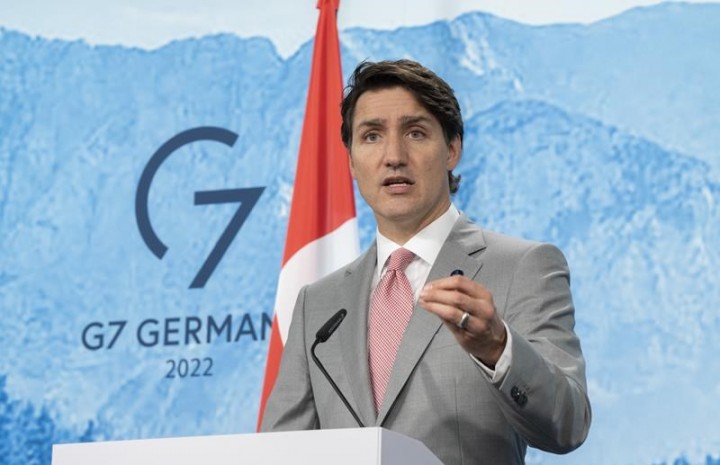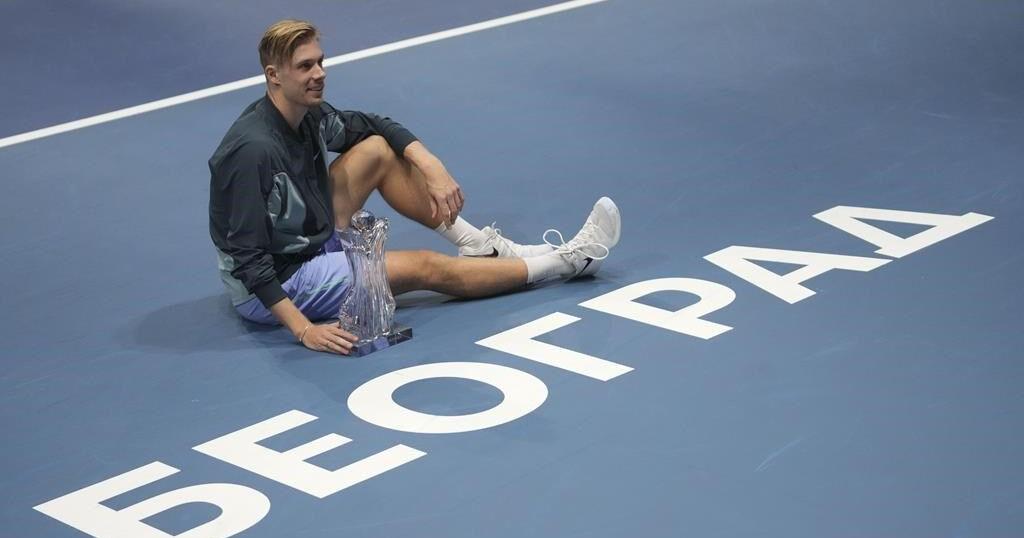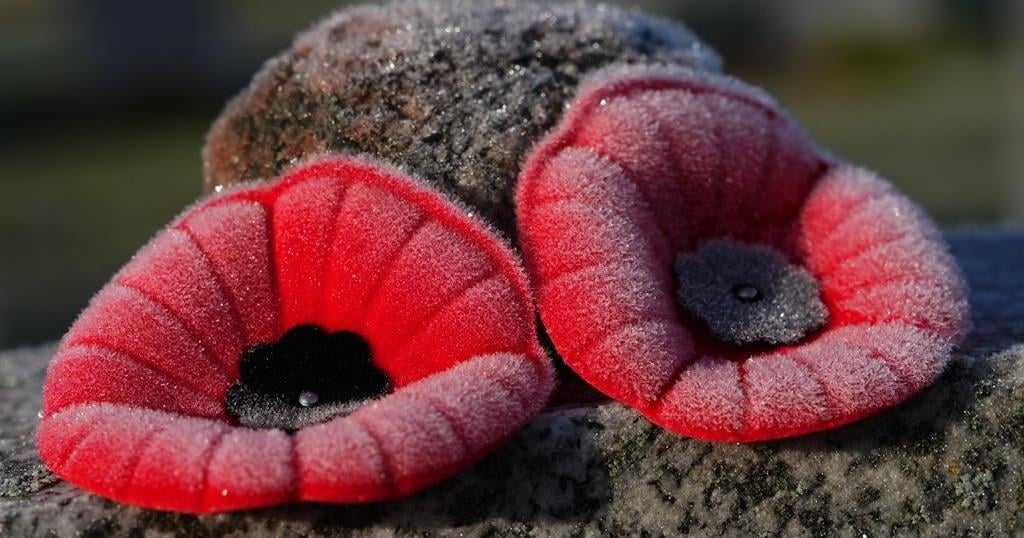MADRID — Prime Minister Justin Trudeau is expected to face tough questions at a major NATO summit this week as a new report released by the alliance ahead of the meeting shows Canada heading in the wrong direction when it comes to military spending.
Members of the 30-member military alliance agreed in 2014 to increase their defence spending to two per cent of their national gross domestic product, and the target is expected to be front and centre when the summit begins on Wednesday.
Trudeau met with NATO leaders Tuesday evening at a dinner hosted at the royal palace in Madrid by King Felipe VI, and will begin formal talks in the morning.
The new report released by NATO Secretary-General Jens Stoltenberg estimates Canadian defence spending will instead decline as a share of GDP to 1.27 per cent this year, down from 1.32 per cent last year and 1.42 per cent in 2020.
The report did not specify the reason for the expected decline, or whether it includes $8 billion in new military spending that was promised in April’s federal budget and whose purpose has not been clearly defined.
Asked about the report during a news conference at the end of this year’s G7 meeting in Germany, as he prepared to head to Madrid for the NATO leaders’ summit, Trudeau said the government has announced several “significant” new investments.
Those include $4.9 billion to upgrade Norad, the shared U.S.-Canadian system used to detect incoming airborne and maritime threats to North America, as well as plans to buy new fighter jets to replace Canada’s aging CF-18s.
The prime minister also said Canada has repeatedly proven its commitment to the NATO alliance by deploying troops and equipment on a variety of missions, including by leading a multinational NATO force in Latvia.
“Canada is always part of NATO missions and continues to step up significantly,” Trudeau said.
“We know how important it is to step up and we will continue to do so to make sure that the world knows that it can count on Canada to be part of advancing the cause of democracy, the rule of law and opportunities for everyone,” he added.
Successive Canadian governments have shown little appetite for meeting the two per cent spending target, which the parliamentary budget officer has estimated would require an extra $75 billion over the next five years.
They have instead emphasized Canada’s numerous other commitments to the alliance, including the provision of 700 Canadian troops to Latvia along with several naval warships to assist with NATO patrols in the North Atlantic and Mediterranean.
That is despite Canada having agreed to the target, as well as repeated exhortations from Stoltenberg and criticism from American officials in Washington calling on Ottawa to invest more in its military and collective defence.
The continuing decline in Canadian defence spending as a share of GDP will almost certainly lead to even more pointed questions for Trudeau in Madrid than was already expected, said defence analyst David Perry of the Canadian Global Affairs Institute.
This is particularly true given confusion surrounding the government’s announcement last week that it plans to invest in Norad modernization, with uncertainty around where the money is actually coming from, when it will be spent and on what.
“I would assume that they were hoping to send a message with the continental defence piece that irrespective of what’s happening in Europe, Canada’s got other defence commitments and that contributes to overall alliance security,” Perry said.
“But the mechanics of how the continental defence piece rolled out would take away from some of that.”
That defence spending is on a downward track when Canada is facing pressure to contribute more overseas and struggling with significant military personnel and equipment shortfalls is also a concern, said Robert Baines of the NATO Association of Canada.
“I’ve always been amazed that Prime Minister Trudeau has facility for dancing over the very serious situation Canada is facing when it comes to defence,” Baines said. “Trying to do so much, and then having so many resource issues and challenges.”
To that end, Trudeau sidestepped a question over whether Canada is prepared to send more troops to Latvia, as NATO seeks to double the size of its forces throughout eastern Europe in response to Russia’s invasion of Ukraine.
Latvia’s ambassador to Canada told The Canadian Press earlier this week that Canada is talking with allies about reinforcing the Canadian-led battlegroup in his country.
The battlegroup in Latvia is one of four established by NATO in 2017, with Germany leading another such unit in Lithuania and Britain and the United States responsible for forces in Estonia and Poland, respectively.
Germany and Britain have both said in recent weeks that they are ready to lead larger combat units in Lithuania and Estonia, but Canada has so far remained silent about its plans in Latvia.
Trudeau also wouldn’t say whether Canada is prepared to put more of the military on high readiness, as Stoltenberg announced on Monday that the alliance plans to increase the number of troops on standby from 40,000 to 300,000.
“We have been working closely with NATO partners, with the secretary-general of NATO, and especially with the Latvians, where Canada leads the (battlegroup) and is committed to making sure we continue to stand up against Russian,” Trudeau said.
“We, like others, are developing plans to be able to scale up rapidly,” he added. “And those are conversations that I very much look forward to having over the next couple of days in NATO.”
Baines predicted whatever additional troops and equipment are added to the Canadian-led battlegroup in Latvia will predominantly come from other NATO members as Canada only recently deployed more troops to the region.
The government announced in February that it was sending an artillery unit and 100 additional soldiers to bolster the 600 Canadian troops already in the Baltic state. It also recently deployed two additional warships to the region.
Perry said it remains unclear how much more the Canadian military, which is short about 10,000 service members, has to spare.
“Maybe there’s an ability to find some more at the back of the cupboard,” he said.
“But if the alliance is going to collectively be stepping up with some additional … troop and equipment commitments, then I’m sure there’d be lots of pressure on us to be part of that as well.”
This report by The Canadian Press was first published June 28, 2022.
— With files from Lee Berthiaume in Ottawa
Laura Osman, The Canadian Press
Related




















